- | Expert Commentary Expert Commentary
- |
North Carolina’s Housing Deficit
State lawmakers should ease restrictions on building starter and middle housing
Despite its reputation as a refuge from the high housing prices and slogging commutes of the Northeast, North Carolina has quietly built up a large housing deficit. Homes built since 2010 are larger, pricier and farther from jobs. Housing construction of all types is still below its 2006 level.
Where Have All the Houses Gone?
The central fact of North Carolina’s housing market since the Great Recession is that new construction has tanked. Figure 1 shows the number of homes built in structures of 1 to 4 units since 1990. Despite a much larger population and far more jobs today, North Carolina has been permitting new houses at early 1990s rates.
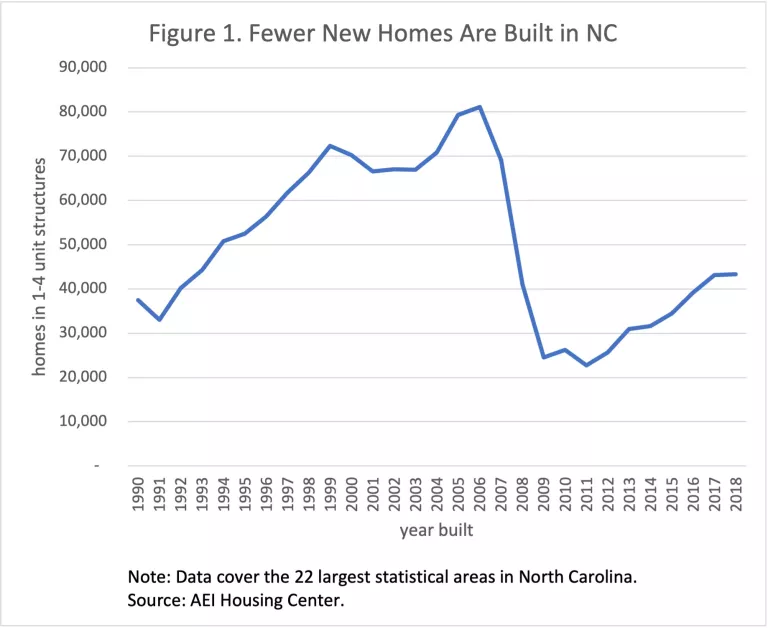
Up, Up, Up
Meanwhile, home prices (figure 2) have risen fast, reaching all-time highs year after year. Year-over-year growth of the average North Carolina home price, as measured by Zillow’s Housing Value Index, rose by 10% during the pandemic, the first time it has reached that mark. Even before the pandemic, home prices were rising about 6% per year for several years, significantly faster than the rate of price appreciation during the housing boom of the 2000s. The big difference? As we saw in figure 1, construction was surging from the late 1990s until 2006.
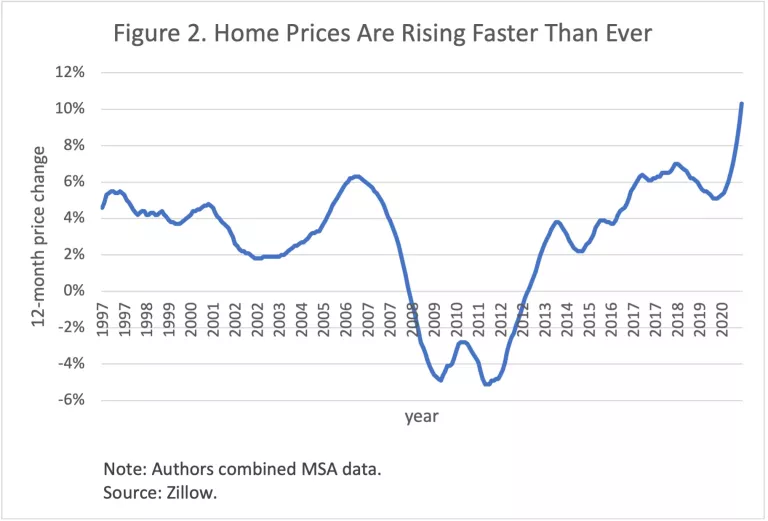
Housing costs for North Carolina renters (figure 3) are also increasing steadily. In the state’s three largest metro areas, rent has increased faster than the national average since 2019. And while the pandemic brought rents to a standstill nationally, rent in North Carolina continued to rise, especially in the moderately priced Piedmont Triad, which contains the cities of Greensboro, Winston-Salem and High Point.
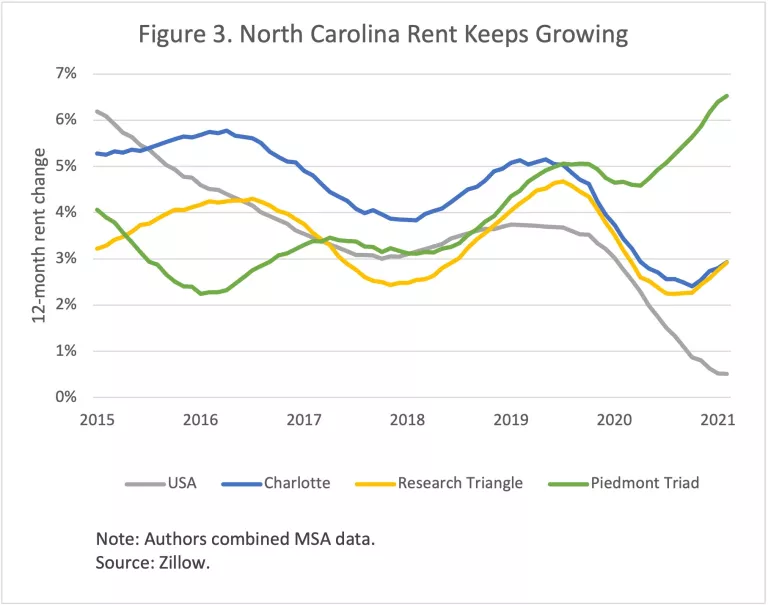
Missing: Starter Homes and Middle Housing
As recently as 2002, the size of the average newly built North Carolina home was 1,800 square feet (or less; we can’t distinguish original square footage from additions). For the past several years, it’s been more like 2,300 square feet. And that’s not because the fanciest homes got bigger; it’s because small homes disappeared from new construction. In the late 1990s, about 1 in 3 new homes had five or fewer rooms. Since 2010, only 1 in 5 new homes meets that mark. In other words, starter homes are a smaller slice of a smaller pie.
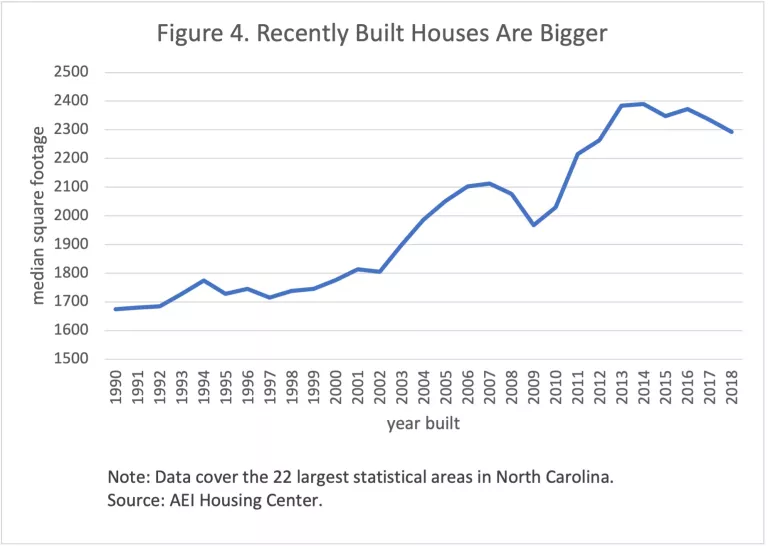
North Carolina localities are permitting few duplexes, triplexes and fourplexes, which are examples of “middle housing.”
Like starter homes, middle housing tends to be cost effective because it has lower per-square-foot construction costs than larger apartment buildings while still allowing multiple households to share the cost of expensive land. Missing middle units are also generally smaller than detached single-family houses.
As figure 5 shows, few of the housing units permitted in larger North Carolina cities are middle housing, although single-family and larger multifamily buildings are well represented.
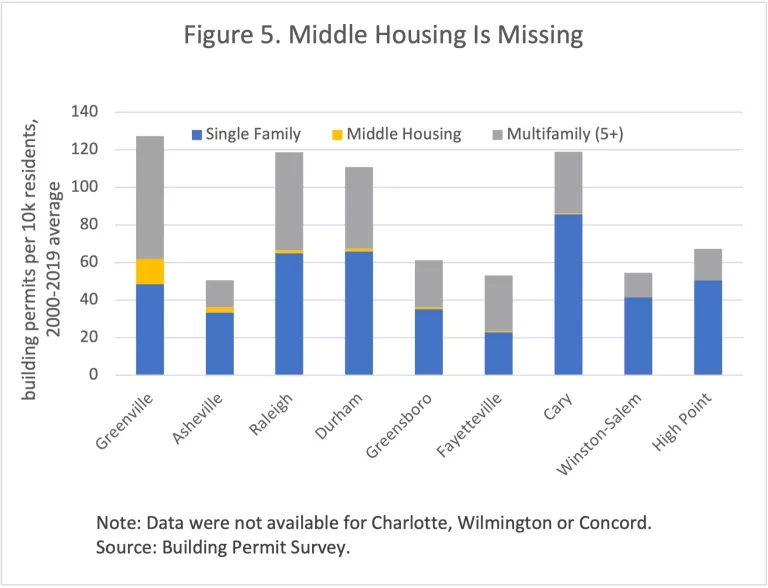
On the Road, Still
Commutes in North Carolina still aren’t bad, but they’ve been rising steadily since the Great Recession. This is to be expected in growing metro areas. North Carolina can ease the traffic associated with growth by enabling housing construction in locations where most destinations are a short drive—or even a pleasant walk—away. That means allowing more development in existing neighborhoods of all types so that population growth doesn’t necessarily mean longer drives.
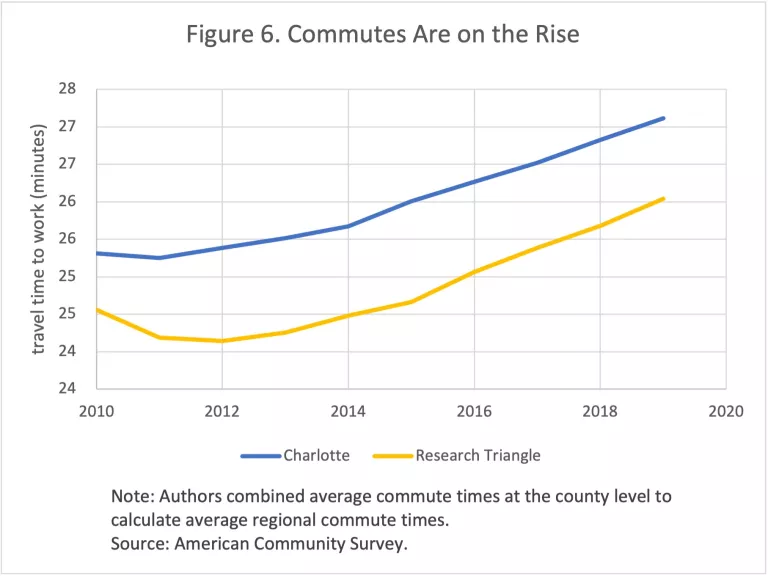
Making It Easier to Build Starter and Middle Housing
North Carolina’s General Assembly is considering legislation, including Senate Bill 349, that would lower barriers to middle housing and starter homes. Our data confirm that the evolution of North Carolina housing institutions over time has resulted in less construction, and far fewer small houses, since the financial crisis relative to past decades. The time is ripe to reconsider the regulatory restrictions and barriers that make it hard to build starter homes and middle housing in North Carolina.